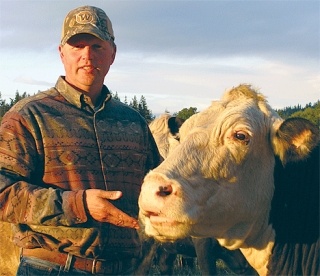The Whidbey Camano Land Trust has acquired a conservation easement on 54 acres of productive farmland next to Deer Lagoon on South Whidbey.
The voluntary and legally-binding easement, acquired in partnership with Island County, was purchased from the heirs of Raymond and Eva Mae Gabelein.
It will permanently limit the development potential of the property so it remains available for food production and wildlife habitat for generations to come.
“We’re pleased to protect some of the finest farmland on South Whidbey Island, land that has been in agricultural production since 1915,” said Patricia Powell, Land Trust executive director, in a news release. “It’s particularly important since well over 73 percent of the land that was being farmed in Island County in 1940 has since been converted to other uses.”
The Land Trust started working with Ray E. Gabelein, the estate’s representative, more than two years ago after he and his siblings inherited their parents’ farmstead. They knew they would have to sell a portion of the farm to settle the estate, but didn’t want to see six houses replace agriculture on the 54 acres.
“It’s a unique place,” Ray Gabelein said. “Not only is this one of a few places on the south end of the island that has prime farming soils, but when you get down here, you really get away from it all.”
The protected Gabelein farmland is just east of about 420 acres of protected wildlife habitat, including 380 acres at Deer Lagoon owned by Island County. Deer Lagoon is the most extensive estuarine marsh on Whidbey Island. More than 170 bird species have been identified in the area, and many of those depend on the Gabelein farmland property for foraging, resting and nesting, including rare species such as the Peregrine Falcon and Merlin. Wildlife on the Gabelein property includes river otter, beaver, muskrat, mink, coyote, raccoon and deer.
“The Gabelein farm fields are important for significant numbers of birds and mammals that also use the adjacent Deer Lagoon wetlands,” said Powell. Without open fields and grasslands, many of the species that are abundant at Deer Lagoon and those traveling from Lone Lake and other areas, would be missing a needed habitat element. Biologists indicate that the loss of agricultural fields on Whidbey Island is proving to be a significant factor in the loss of species from areas.
Given the combination of wildlife habitat and agricultural uses, the project was a good fit for the Whidbey Camano Land Trust, a nonprofit organization whose focus areas include protection of wetlands, wildlife habitat and working farmland.
A conservation easement is a voluntary but legally binding agreement between a landowner and a qualified entity, such as the Land Trust, that permanently limits the type or amount of development on a property. The landowner retains ownership and use of the property and the ability to sell or pass the land to others, but the land-use restrictions remain in effect forever. The conservation easement on the Gabelein property will limit the number of potential home sites to one rather than the six that would were legally allowed under current zoning. The easement will also allow current and future owners to continue agricultural uses and adjust those agricultural uses as needed to ensure that the land remains productive and useful.
Funding for acquisition of the conservation easement was provided by grants from the Island County Conservation Futures Fund and the Washington Farmland Preservation Program administered by the Washington Recreation and Conservation Office. The Land Trust and Island County will jointly own the conservation easement. Under a cooperative agreement with the county, the Land Trust will be responsible for monitoring and managing the easement.



